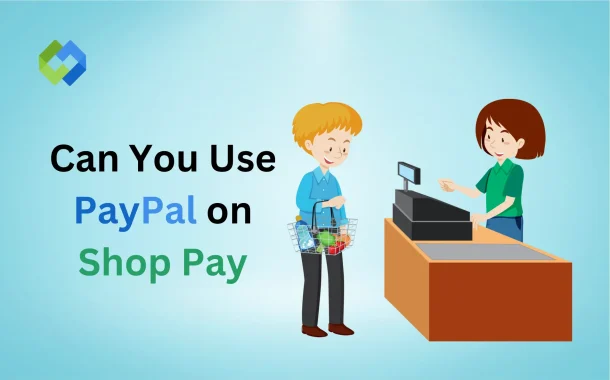Having multiple payment options is important for online shopping. Some users prefer credit cards, while others use digital wallets like PayPal. Offering different payment methods makes shopping easier for everyone. It also helps businesses increase sales by reducing checkout problems.
Table of Contents
Table of Contents
Payment Methods Does Shop Pay Accept
Credit and Debit Cards
Shop Pay accepts major credit and debit cards, including Visa, Mastercard, American Express, and Discover. These payment methods allow users to complete transactions quickly and securely. Since these cards are widely used, most shoppers can easily make payments without any issues.
Shop Pay Installments
Users can pay in smaller amounts using Shop Pay Installments. This feature is available for eligible purchases, allowing buyers to split their payments into four interest-free installments. It helps customers manage their expenses better while still making necessary purchases. Not all stores offer this option, so checking availability before checkout is important.
Unsupported Payment Methods
Shop Pay does not accept PayPal or other third-party digital wallets like Venmo. Customers must enter their card details manually or use their saved payment method. While PayPal is widely used, Shop Pay focuses on direct card payments to ensure a seamless checkout process.
Other Payment Options
Some stores may support Apple Pay or Google Pay if they enable these options separately. These digital wallets provide quick and secure payments but are not directly linked to Shop Pay. It is always best to check the store’s accepted payment methods before making a purchase to avoid any issues at checkout.
Can You Use PayPal on Shop Pay
Shop Pay does not support PayPal as a direct payment method. This means users cannot link their PayPal account to Shop Pay for quick checkouts. Instead, Shop Pay focuses on credit and debit card payments, as well as its own installment options. Users must enter their card details or use a saved payment method to complete their purchases.
The main reason PayPal is not supported is that Shop Pay and PayPal are separate payment systems. Shop Pay is designed for Shopify stores, while PayPal is an independent platform used across many websites. Since both services operate differently, they do not integrate directly within Shop Pay.
However, this does not mean users cannot use PayPal on Shopify stores. Many Shopify merchants offer PayPal as a separate checkout option. If a store accepts PayPal, users can select it at checkout instead of Shop Pay.
Alternative Payment Options on Shop Pay
Shop Pay Installments
Shop Pay offers an installment payment option for eligible purchases. Users can split their payments into four interest-free installments, making it easier to manage expenses. This option is useful for those who prefer to pay over time instead of making a full payment upfront.
Digital Wallets
Although Shop Pay does not support PayPal, some stores allow payments through Apple Pay and Google Pay. These digital wallets provide a fast and secure way to pay without manually entering card details. However, their availability depends on whether the store has enabled them.
Using PayPal on Shopify Stores
PayPal is not directly supported by Shop Pay, but many Shopify stores accept it as a separate checkout option. If a store allows PayPal, users can choose it at checkout instead of Shop Pay. This enables them to pay using their PayPal balance, linked bank account, or credit card.
How to Use PayPal for Shopify Purchases
Checking if PayPal Is Available
Before using PayPal on a Shopify store, users should check if the store accepts it as a payment option. Most Shopify stores display available payment methods at checkout, often listing PayPal along with credit cards and other options. If PayPal is not visible, the store may not support it, and users must choose another payment method.
Selecting PayPal at Checkout
When proceeding to checkout, users need to choose PayPal instead of Shop Pay or credit cards. After selecting PayPal, they will be redirected to the PayPal login page, where they must enter their account details. This step ensures a secure and direct transaction without manually entering card details on the Shopify store.
Completing the Payment
Once logged in, users can select their preferred payment method within PayPal, such as their PayPal balance, linked bank account, or credit card. After confirming the payment, they will be redirected back to the Shopify store, where they should see a confirmation message or email verifying the successful purchase.
Pros and Cons of Using Shop Pay
Pros of Using Shop Pay
- Faster Checkout: Shop Pay saves payment details, allowing users to complete purchases quickly with one click, reducing checkout time.
- Installment Payments: Shop Pay Installments let users split payments into four interest-free parts, making it easier to afford larger purchases.
- Shopify Optimization: Since Shop Pay is built for Shopify stores, it ensures smooth transactions and minimizes payment issues.
- Secure Transactions: Shop Pay uses encryption and fraud detection to protect user information, making it a safe option for online payments.
- Eco-Friendly Features: Shop Pay supports carbon-neutral shipping, helping to reduce environmental impact when making purchases.
Cons of Using Shop Pay
- Limited Payment Options: Shop Pay only supports credit and debit cards, meaning users cannot pay using PayPal, bank transfers, or other digital wallets.
- Only for Shopify Stores: Shop Pay is exclusive to Shopify stores, so it cannot be used for purchases on other e-commerce platforms.
- No Buyer Protection Like PayPal: While Shop Pay is secure, it lacks PayPal’s buyer protection, which offers easier refunds and dispute resolution.
Conclusion
PayPal cannot be used directly with Shop Pay. Shop Pay only accepts credit and debit cards for payments. However, many Shopify stores offer PayPal as a separate payment option. Users can select PayPal at checkout if the store supports it.
Both Shop Pay and PayPal have their benefits. Shop Pay offers fast checkout and installment payments, while PayPal provides security and buyer protection. Choosing the right option depends on the user’s needs. If a store allows both, users can pick the method that suits them best.














